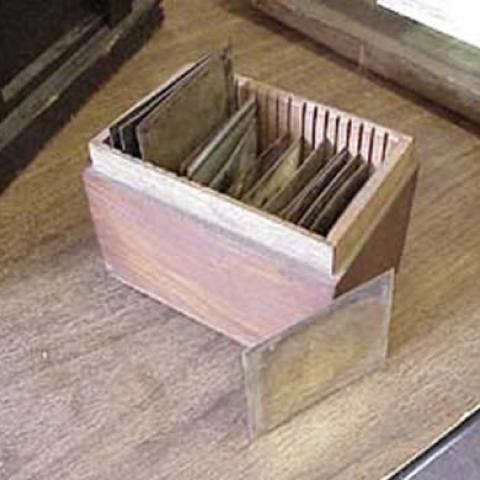
In 1826, Frenchman Joseph-Nicephore Niepce took a picture (heliograph, as he called it) of a barn. The image, the result of an eight-hour exposure, was the world's first photograph. Little more than ten years later, his associate Louis Jacques Mande Daguerre devised a way to permanently reproduce an image, and his picture—a daguerreotype—needed just twenty minutes' exposure. A practical process of photography was born.
The beginning of the nineteenth century was an exciting time to be alive. As people began to learn more and more about the world around them in increasing detail, the need for capturing surroundings more accurately arose. This need eventually exceeded the capability of the artist's hand alone. People sought ways of directly capturing images so that Nature was somehow able to portray herself.
Louis Jacques Mande Daguerre was born near Paris, France in 1787. The illusionistic painter Pierre Prevost asked him to join his team of panorama-painting artists when he was just twenty years old. Daguerre soon after became an assistant stage designer for a theater. He was a gifted illusionist in terms of his ability to design sets that dazzled his audiences. An artist who wanted his work to be as real as possible, Daguerre created amazingly life-like scenes right in the theater. These designs, which were able to simulate the passage of day into night, changes in weather, and even give viewers the feel of motion, Daguerre later coined as "dioramas," or "dramas of light." By 1825, Daguerre was a successful creator, proprietor, and promoter of a successful illusionistic theater in Paris that specialized in these dioramas.
Daguerre's illusions depended heavily on the accurate representation of detail and perspective on a large scale. So, like many others of his day, he used the camera obscura* as a tool to help him trace two dimensionally what his eyes saw in three. Daguerre explained that the magic of his dioramas resulted from his use of light in the scenes. He claimed to have discovered a system of painting that could transform the appearance of an object by switching between reflected and refracted light, as well as by changing the color of the light that fell upon it.
Daguerre experimented for years with increasing the sharpness of the lens in the camera obscura and working at discovering the reaction of various light-sensitive materials when applied to different surfaces. He corresponded with Joseph-Nicephore Niepce, who was engaged in similar efforts. They worked at permanently capturing the images they saw in the camera obscura, and critiqued each other's work with each attempt. It was essential that they prepare a medium to be sensitive to light, using a lens and light to form an image upon it, but then making that same medium insensitive to further exposure so that the resulting image could be viewed in light without harming it. Niepce passed away in 1833, but Daguerre continued some correspondence with his son, Isidore.
By 1835, word began to spread around Paris that the city's favorite master of illusion and light had discovered a new way to enchant the eye. In January of 1839, the invention of a photographic system that would fix the image caught in the camera obscura was formally announced in the London periodical The Athenaeum.
Louis Daguerre called his invention "daguerreotype." His method, which he disclosed to the public late in the summer of 1839, consisted of treating silver-plated copper sheets with iodine to make them sensitive to light, then exposing them in a camera and "developing" the images with warm mercury vapor. The fumes from the mercury vapor combined with the silver to produce an image. The plate was washed with a saline solution to prevent further exposure.
Daguerreotypes offered clarity and a sense of realism that no other painting had been able to capture before. By mid-1850's, millions of daguerreotypes had been made to document almost every aspect of life and death. Photography was on its way to becoming quite commonplace; portrait studios—and eventually, everyday picture-taking— would catch on in a flash.
*(From the Latin, "dark chamber") A light-proof box in which images of outside objects are projected through a lens onto a facing surface. It was used as a drawing tool and helped artists to render more accurate three-dimensional scenes.
The camera pictured above is a Bishop Daguerreotype Camera and Developing Apparatus, 1839, given to The Franklin Institute by Dr. Paul Beck Goddard. Goddard was an Assistant Professor at the University of Pennsylvania where Joaquim Bishop was an instrument maker in the chemistry department. This is one of three early American cameras made by Bishop in Philadelphia in the Fall of 1839, a few months after Louis Daguerre announced his invention before the Academy of Science in Paris.
Reference: The Silver Canvas: Daguerreotype Masterpieces from the J. Paul Getty Museum. J. Paul Getty Museum, 1998.
Note: The objects pictured above are part of The Franklin Institute's protected collection of objects. The images are ©The Franklin Institute. All rights are reserved.


